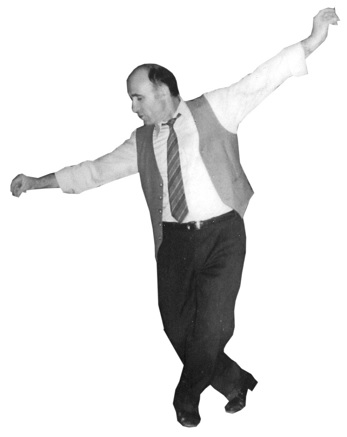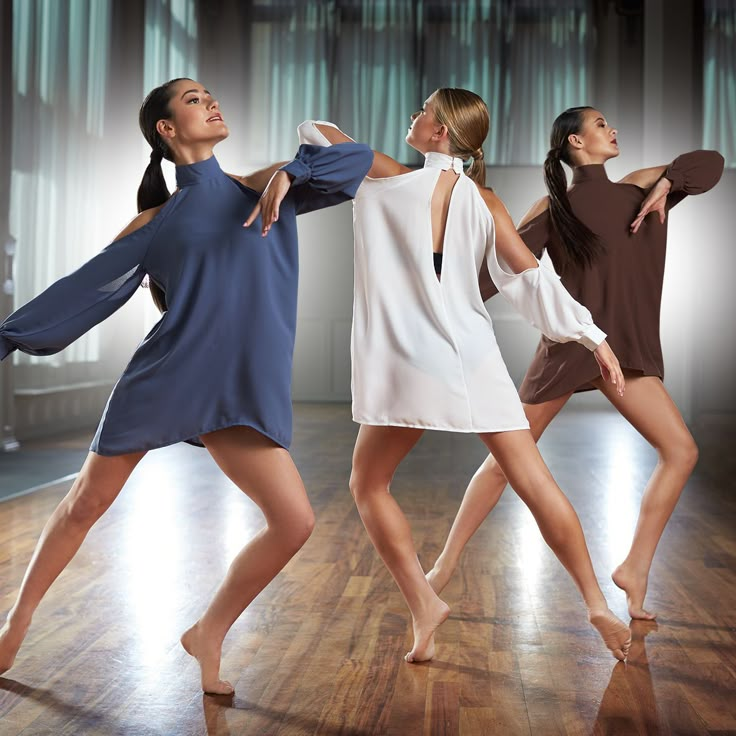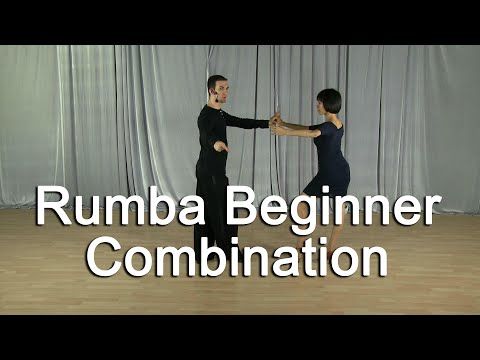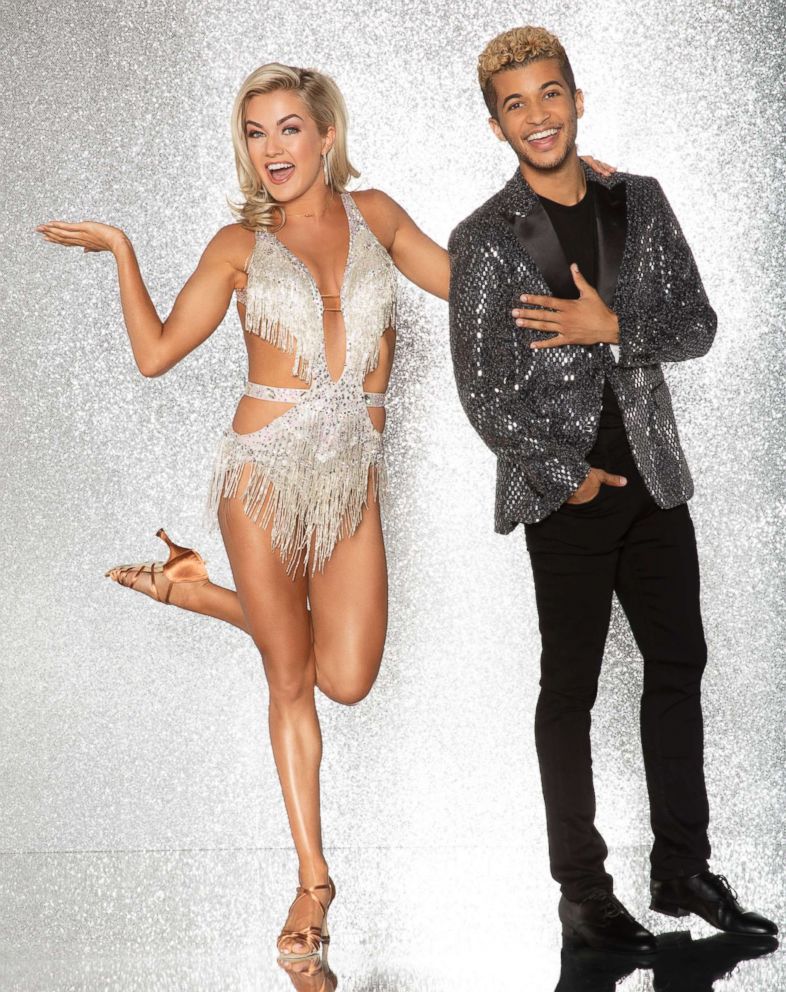How to dance twist my hips
Do I Have to Move my Hips When Dancing Salsa?
Share this
A lot of students that come in to my classes often ask me, "Do I have to move my hips when I dance?" "How much do I have to move my hips when I dance?" "Do guys also have to move their hips when they dance?" It sounds funny every time I hear it, as if the hip movement police is going to come get you if you're not shaking it enough. It's really important to address this so that you don't look silly next time you’re out salsa dancing at the club with your friends.
More...
Usually it's a non-Latin guy with a Latin girlfriend in class that is asking these questions. Latin women put pressure on their men to "shake it" when they are dancing, making remarks about how stiff they are, and how they need to loosen up and move their hips more.
Also, it's the movies' fault for portraying salsa dancing as some hip movement shaking contest. The people "dancing" in these movies seem to be wiggling, twisting and shaking EVERYTHING a whole lot!
The short answer is yes, guys and girls do move their hips when they dance, but it's not so simple as just shaking them about. The hip movement that occurs when dancing is supposed to look natural, not forced like in the movies. The hip movement happens because you’re alternating the bending of your knees. The same happens when you walk — your hips move because you’re bending and straightening your legs.
Imagine if you saw someone trying to move their hips when they walked, really focused and determined to shake their hips when they stepped. It would look completely silly and not attractive at all! The rule of thumb is: if you feel like you’re "trying" to shake it and forcing yourself to move your hips, then it's too much.
So what do you do? Stand up straight with both feet close together and legs straight. Now bend the right knee without bending the left one. Tadaaa! Your hips just moved. Now, straighten the right leg and bend the left knee and your hips move to the other side. If you keep this up, you will get your hips to move naturally. Practice that exercise. The key is to not force your hips to move but to focus on the bending of the knees. Your hips will start to move naturally little by little.
Master this little exercise so you can impress your friends at the next salsa party you go to! You're going to be moving like a natural in no time :)`
Loved this? Spread the word
Related posts
Places to go Latin Dancing in Fort Lauderdale/Broward County.
Read More
Salsa Clubs to go Social Dancing in Miami and Broward
Read More
The Importance of Musicality and Timing
Read More
7 TikTok Dance Moves You Can Learn At Home
TikTok is filled with short, fun dance routines that you can watch for endless hours (trust me, I've done it), share with friends, and learn at home with STEEZY.
But, let's face it.
If you don't have a dance background, the short, hard to follow tutorials on TikTok can be a frustrating roadblock to joining in on the fun.
Here are simple, easy ways you can learn the 7 most popular moves on TikTok.
1. The CitiRokk
The CitiRokk is that one SUPER POPULAR TikTok dance move where you rock your body from side to side and cross your arms in front of your chest.
Watch this video with the move’s creator, CitiBoyRio, to see how the move took over TikTok!
*BONUS*
While the CitiRokk was popularized on TikTok by the Renegade dance routine, CitiBoyRio just dropped a new routine of his own!
Learn the CitiRokk Shuffle routine just in time before it goes viral. 😎
Hit this link to learn both the CitiRokk and the CitiRokk shuffle step-by-step on STEEZY Studio.
2. The Woah
Just WATCHING people hit the Woah gets me excited.
It's simple, hype, and easy to apply to any song with a dope bass beat.
If you've been lurking on TikTok for any time at all, you've probably already seen it yourself and understand how it's supposed to look.
How you create the reverb motion, where to position your arms, and when to move your body to hit the beat on time is all you need to learn. 👇
3. The Swagg Bouncee
Do your hips naturally sway from side to side when a good song comes on?
Think of the Swagg Bouncee as your natural hip-sway's cooler, trendier sibling.
Lil Rich Swagg, who created the Swagg Bouncee, says to “Stay on your tippy toes to get a full range of motion,” in his STEEZY Studio class.
By committing to the move and making it bigger, you'll look more confident!
4. The Kangsta Wok
In the video below, this TikTok dance move's creator, Zaya Sosho, explains how he based the Kangsta Wok on a "dip" move he saw during a cypher.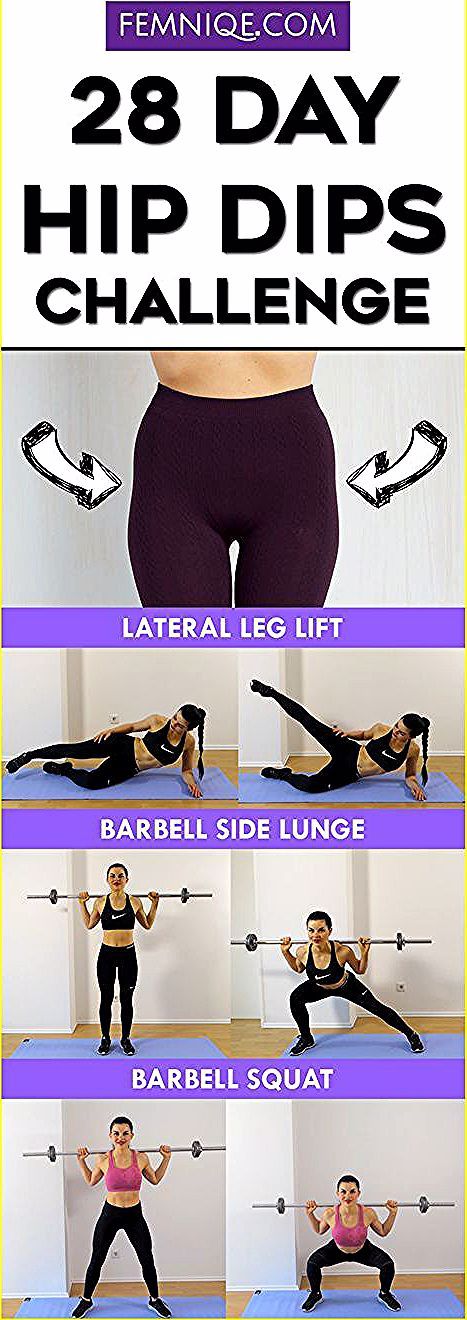
When you do the Kangsta Wok, make sure not to over- or under-exert your energy.
Attack each level drop with a little intensity to make the move look extra hype, but don't go so hard that your body tenses up!
You want to make it look effortlessly cool. 😎
Still not totally sure how to make that happen?
Don't worry... Zaya Sosho will teach you in the tutorial below!
Use this guide to help to you practice too!
5. The Smeeze
This move first entered the dance scene in 2009, but at the time, it was mainly used during battles and parties.
When TikTok arrived in 2018, the move's creator, Chonkie, knew this was the perfect platform to bring the Smeeze to the next level.
With hashtags like #SMEEZEEVERYWHERE, and dance crews like the Jabbawockeez picking it up, the Smeeze quickly became a TikTok favorite.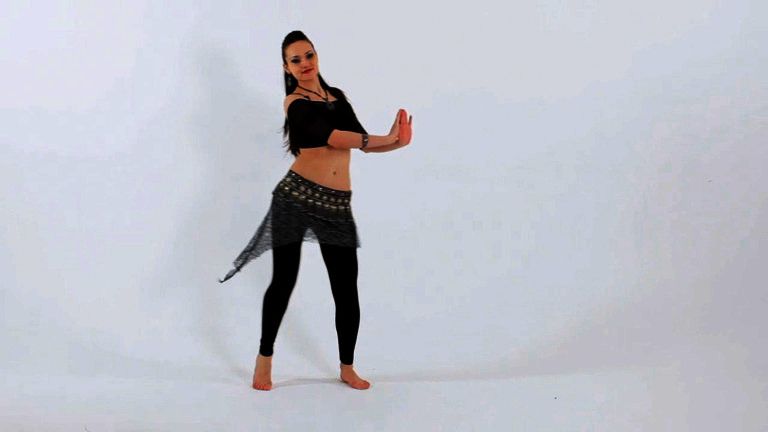
You can learn more about it from Chonkie himself in this video!
While millions of people are, in fact, Smeezin' everywhere, the move can be a little tricky due to the alternating movements of the arms and legs.
Use this step-by-step tutorial to get the timing jussssst right!
6. The Bust Down
As far as TikTok dance moves go, the Bust Down is definitely on the sexier end of the spectrum.
Characterized by a scoop/thrust motion of the hips, the move is great for raunchy club jams like "Thotiana" by Blueface – the song that popularized the move!
If adding a lil sexy swagger to your movement feels like climbing Mt. Everest, know that practice and repetition will be your best friend!
STEEZY's tutorial breaks the move down simply and efficiently, so you can learn it in just 9 minutes and repeat sections LITERALLY AS MANY TIMES AS YOU WANT.
Trust us, you'll have swag down to a science.👨🔬
7. The Cosby Walk
Yes, when executed the right way, the simple act of marching can become a dope dance move!
Watch our video with Rated R, creator of the Cosby Walk, to see exactly what we mean:
As you're learning this move, make sure you're placing your feet firmly on the floor and evenly distributing your weight!
If your bottom half is weak and wobbly, you'll look more bambi than bad@$$.
Related article: Why Staying Light On Your Feet Is Actually Bad Advice
As much as we love watching the mesmerizing 15-second dance tutorials that already live on TikTok...
It's LIFE-CHANGING to have legit dancers break moves down and make them easy to learn.
Now, you have everything you need to master the hottest dance moves and join fun challenges on TikTok.
Start learning now for free!
How to do the figure eight with the hips. figure eight hips belly dance
The hips, belly and pelvis, without a doubt, play a central role in oriental dance, being the focus of female energy. It is on the hips and abdomen that the main attention of the viewer is concentrated. These parts of the body are most involved in the dance and seem to be designed to perform the key and most expressive elements of bellydance.
One of the most enchanting movements in belly dance is the enigmatic, flowing, serpentine figure eight of the hips. At first glance, what could be difficult in the implementation of an ordinary geometric figure - the figure eight? However, this eight is not so simple, but quite intricate. And inside it lies many secrets. Only in a bellydance lesson are all the secrets of how to do the figure eight beautiful with the hips revealed: this is the direction of movement of the hips, and the amplitude of the braces, and the position of other parts of the body during the execution of the figure eight.
In the figure eight, the hips work in isolation, while other parts of the body remain motionless. It is this technique that helps to focus on the hips, so that the movement looks beautiful. If the dancer has forgotten about this trick or has not worked out such a skill enough, if the shoulders or chest begin to move along with the hips, the movement will look “blurred” and unprofessional.
Before making the figure eight with the hips, it is necessary to prepare, stretch the lateral muscles: it is the well-developed muscles of the body that allow you to achieve a large amplitude, due to which the movements of the hips produce an effect on the viewer even from afar. The figure eight is advantageously combined, for example, with twists - and for their implementation, the preparation of the muscles of the body is also needed.
When performing the figure eight, the position of the body, back and shoulders is important. Eights are of various types, depending on the trajectory of the movement of the hips - horizontal and vertical, external and internal.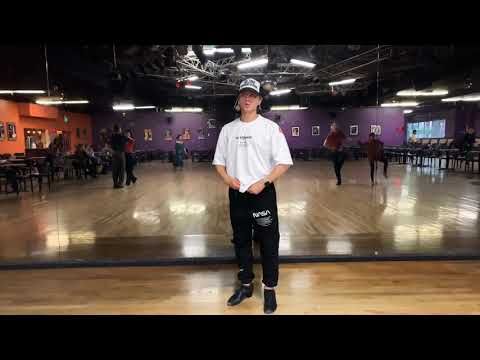 They are perfectly combined with shaking, penetrations, twisting.
They are perfectly combined with shaking, penetrations, twisting.
In her classes and video lessons, Samira always reminds dancers of their individuality in dance and recommends “trying on” movements and elements. So, when doing a figure eight with your hips, you need to watch your body and see in which position this movement will look most impressive.
Thanks to such high-quality elements as the figure eight of the hips, belly dance acquires its authenticity, unique originality and true feminine beauty!
| Personal video consultation |
| Buy video tutorial | ||||||
|
Duration: 20 minutes
Payment is possible via PayPal
or on a Sbercard (without interest)
Write on samirara1@mail.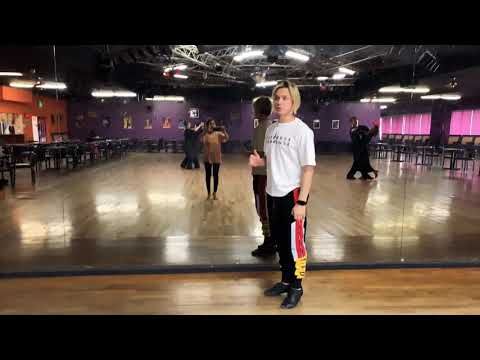 ru a detailed explanation of the "Eight" movement and its variations, as well as common mistakes in its execution.
ru a detailed explanation of the "Eight" movement and its variations, as well as common mistakes in its execution.
Read
Watch
About school
Information
X
Hip movements. Belly dance. Master's Lessons. Advanced level
Hip movements
Starting position: standing on a full foot, legs slightly apart (about the width of the foot) and located on the same line parallel to each other, the body is slightly tilted back, the back is straight, the stomach is relaxed, the arms are lowered along the body, the knees are “soft”.
Performing an exercise "Swinging hips back and forth ("inward" and "outward"). We take the buttocks back as much as possible, while we do not deviate back, hands are brought behind the back. Then we draw the buttocks into ourselves as much as possible, and bring our hands forward with a smooth movement. We tighten the hips, sharply reducing the muscles of the buttocks so that the pelvis leans forward and up a little.
We tighten the hips, sharply reducing the muscles of the buttocks so that the pelvis leans forward and up a little.
We linger for a few seconds in this position. Then we take the hips back as far as possible - the legs and body remain motionless - and arch.
We work in the vertical (frontal) plane. Again, we reduce (squeeze) only the muscles of the buttocks so that the pelvis leans forward and up a little ("inward"). Movement of the pelvis forward and up - back and up, emphasis at the farthest point of this movement - again the pelvis "in itself" - again back and up, emphasis, etc.
Try to keep the movement in the frontal plane along the path of the lower arc of the semicircle. Remember your posture: shoulders down, back straight.
Starting position: standing on a full foot, legs slightly apart (about the width of the foot) and located on the same line parallel to each other, the body is slightly tilted back, the back is straight, the stomach is relaxed, the buttocks are tightened, the knees are “soft” and slightly bent, arms to the sides.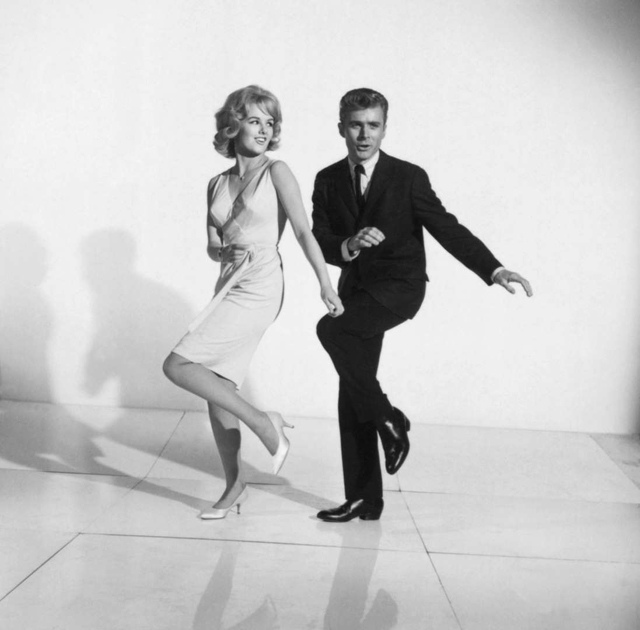 We perform a rocking chair with the hips.
We perform a rocking chair with the hips.
The rocking chair is performed by alternately straightening the knees: without changing the position of the left leg, we straighten the right leg at the knee, due to which the right thigh is “pushed” up and we sort of pull it under the rib (in this case, the lateral abdominal muscles contract).
While moving, do not tear off the heels and do not transfer the center of gravity from foot to foot. The top remains motionless and does not sway during the work of the hips. We make sure that the hips move only up and down, do not take them to the side or back. They should be relaxed - only the knees work. Now we bend the right leg at the knee - we lead the left thigh up.
We continue the alternating movement with one or the other hip, without deflecting the body and keeping the line of the shoulders in the same position - parallel to the floor.
Imagine that you have a bowl of water on your head and your task is not to spill the water. You can also try to put a book on your head during this exercise and try to move so that it does not sway, much less fall.
You can also try to put a book on your head during this exercise and try to move so that it does not sway, much less fall.
Execute rocking the hips to the sides in three counts: right-left and a little slower to the right - slightly slow down the knee extension before starting to move in the other direction (without a pause in the movement), left-right and a little slower to the left, slightly slowing down the knee extension until the next movement to the other side. Movements should be smooth, unhurried, but continuous. Simultaneously with the rocking chair, we perform circular movements with the hands. Again we make a rocking chair with our hips to the sides without pauses. At the same time, we raise our hands up, at the same time performing rotations with the wrists along the trajectory of the eight. Repeat the movement with the hips at a fast pace.
If desired, the pace of side rocking with the hips can be increased even more: increasing it gradually and maintaining the rhythm, move on to shaking the hips. When shaking-rocking chair, the pelvis swings due to the work of the muscles of the lower back, the legs become freer. With this shaking, you can learn to walk quite easily. For example, climb on the "half-toes" and try to go forward with shaking, and then back. The faster the hips move, the more they need to relax. But don't forget to work with your hands.
When shaking-rocking chair, the pelvis swings due to the work of the muscles of the lower back, the legs become freer. With this shaking, you can learn to walk quite easily. For example, climb on the "half-toes" and try to go forward with shaking, and then back. The faster the hips move, the more they need to relax. But don't forget to work with your hands.
If at first the shaking is good for you, and after a minute or two the muscles begin to “stone” and the shaking rhythm is lost, it doesn’t matter. Stop, shake your legs alternately, relax your muscles and start shaking again. The vibration of the body is given by muscles relaxed at your will, and not by tension.
Performing a rocking chair at a fast pace, we take the pelvis forward, then back and then move in a circle to the left. So we impose movement "rocking hips back and forth" for movement "small circle of the hips in the horizontal plane" plus circular movements of the hands.
Connecting the side rocker with the hips pulling with the hips, continuing to rotate with the wrists.
Hip pull is a basic element of oriental dance, a movement from the group of slips. It should be done every day during every workout.
Starting position: we stand straight on a full foot (legs are on the same line), the body is slightly tilted back, the back is straight, the legs are shoulder-width apart, the knees are “soft”, the arms are at the sides. We take the hip as far as possible to the left (without ceasing to perform the rocking chair at the same time), leave the legs and the upper part of the body motionless and transfer the body weight to the left leg. Shoulders, belt line during pulling remain parallel to the floor, knees do not bend. We pull the hips to the right and transfer the weight of the body to the right leg. The hips move to the right and left with maximum amplitude.
Pulling with the hips stretches the lateral muscles, strengthens the muscles of the lower back and abdomen, perfectly tones the muscles of the waist, and also helps to prepare the body for further performance of various oriental movements (in particular, amplitude volumetric eights and rotations).
By sliding your hips, you can move back and forth and left and right.
After pulling with the hips, we move on to another basic movement, simple to perform, but effective and easily combined in dance with other elements, - eights. Let's start with the execution of horizontal eights (movements are performed in a horizontal plane clockwise and counterclockwise).
Horizontal figure eight backwards (“away from you”). While pulling, we lingered for a moment in a position where the left hip was maximally abducted to the left and, accordingly, the weight of the body was on the left leg.
Now we lead the right thigh diagonally forward to the right, wrap it as much as possible and begin to outline the first half of the imaginary figure eight - we bring this thigh back.
Next, the left thigh is brought forward (the weight of the body is gradually transferred to the left leg), turns as much as possible (until you see your left buttock out of the corner of your left eye) and begins to outline the second half of the eight: to the left until it stops, and then back to the left.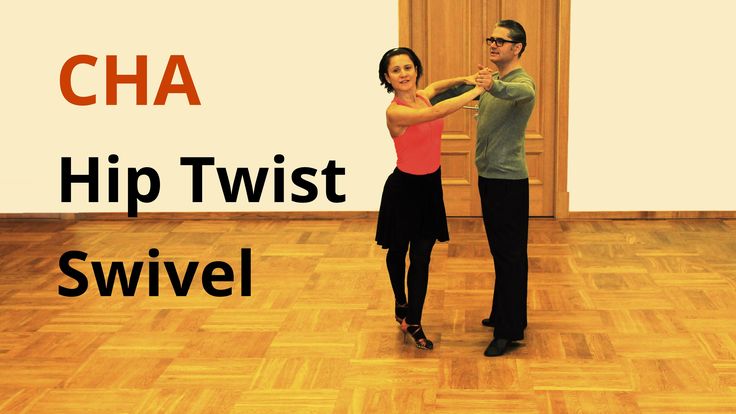
Only the lower part of the body moves. Breathing remains even and smooth, like the movement itself.
You can help yourself a little: when the hips are twisting in one direction, slightly twist the body in the other (so that the hips do not drag it along).
Straightened knees, feet that remain parallel and heels on the floor will help to achieve a smooth, soft and continuous movement. Imagine that you are making your way forward without the help of your hands through some rather dense, viscous substance and, as it were, are raking it with your hips, alternately pushing it to one side or the other.
This exercise increases the elasticity of the ligaments.
Movement "horizontal figure eight forward ("inward")" schematically looks the same as the previous one, only performed in the opposite direction. We take the left thigh back diagonally to the maximum twisted position (in which the chest still remains motionless).
Body weight is transferred to the left leg. With a smooth circular motion, we describe half of the figure-eight forward with the left thigh, turning the right thigh back as much as possible. We transfer the weight of the body to the right leg.
In a circular motion, move the right thigh forward and describe the remaining half of the figure eight. We try to bring the hips forward no less than back. We do not turn our shoulders. They must always look ahead. If you are still not very good at “separating” the top from the bottom, try doing the figure eight with your whole body first. I managed to catch the trajectory - you can move on to fixing the body and start moving only the hips.
Try to bring your hips forward no less than back, then the movement will be smooth and symmetrical. Keep an eye on the upper body: it should remain motionless, but not enslaved, keep the line of the shoulders parallel to the floor line.
When performing the figure eight, the legs should be placed parallel to one another and on the same line, not just for stability or beauty: if you put them in an eversion position (heels together, toes apart), then, involuntarily pinching the buttocks, limit the amplitude of their movement.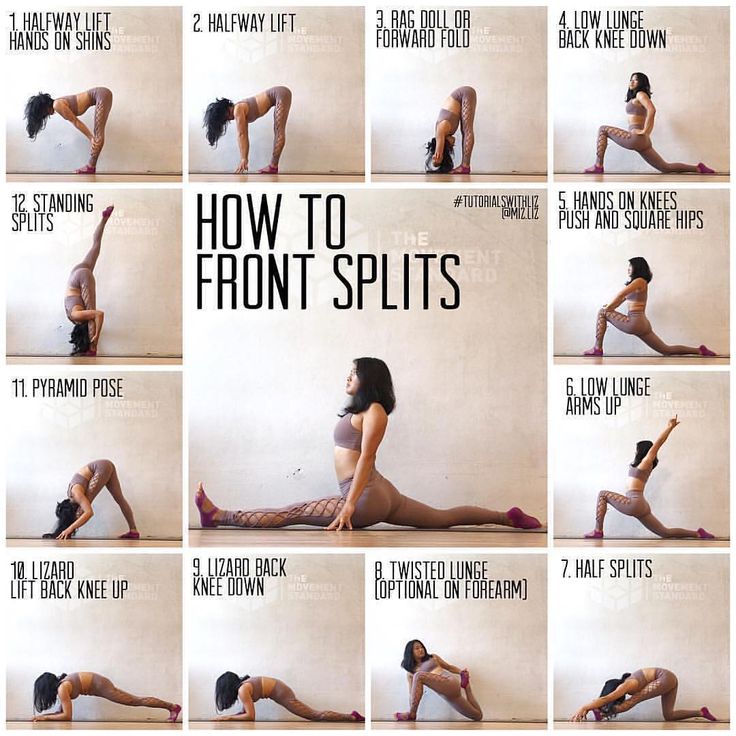
Another version of the eights with the hips - vertical figure eights, or, as they are figuratively called, "pendulums". The second name of this dance component was not born by chance: remember how the pendulum of the clock moves, describing the lower semicircle of an imaginary circle, like a young crescent turned upside down with “horns”. The oriental dancer reproduces the described trajectory with the help of hip movements in a strictly vertical plane. Vertical eights can be performed, like horizontal ones, in two directions opposite to each other: “away from you” (from top to bottom) and “into yourself” (from bottom to top).
We are still standing on a full foot (legs are located on the same line and parallel to one another), the body is slightly tilted back, the back is straight, the buttocks are tucked up. But now, to perform the "pendulum", put your feet together. Body weight on the left leg. We tear off the right heel from the floor and raise the thigh as high as possible.
The weight of the body is gradually transferred to the right leg. Further, drawing a quarter of a circle to the right and down, we begin to lower the right thigh, at the same time pushing it as far as possible to the side, that is, to the right. From this extreme side point, we continue to lower the thigh to the lowest point of the circle thanks to the “soft” knee. Body weight on the right leg. We put the heel of the right foot on the floor and lower the right thigh down.
Now we tear off the left heel (knee is relaxed), lift (due to lifting the heel off the floor) the left thigh up (as if leading to the armpit) and push it to the side as far as possible, without deflecting the body in the opposite direction and outlining a rather steep semicircle of the imaginary eights.
Pull the thigh towards you, returning to the starting position. We continue to draw symmetrical circles in a vertical plane. The body should remain motionless, and the line of the shoulders should be parallel to the floor line. Add hand movement to this dance element.
Add hand movement to this dance element.
Hands in oriental dance move depending on the nature of the music, and therefore often their movements do not coincide with the movement of the hips: the hands work at least twice as slowly as the hips. If the hips are the rhythm, then the arms are the melody.
From the previous starting position, smoothly proceed to the next movement - step Suher Zaki, or "stilts".
We stand on straight lines, located on the same line parallel to one another on toes, the body is slightly tilted back, the back is straight, arms to the sides. We begin to alternately lower the heels to the floor in three counts. We lower the heel of the left leg - the left thigh goes down, then we raise the heel of the left leg, returning to its original position (on the toes), and lower the heel of the right leg.
Left - right - left - paused for a moment. Right - left - right - lingered for a moment. And so several times in a row in the rhythm of the sounding melody. We do not bend our knees - we only raise our hips. The head is on the same level: the movement occurs mainly only due to the hips. Continuing to perform the movement, alternately tear off the legs from the floor.
Right - left - right - lingered for a moment. And so several times in a row in the rhythm of the sounding melody. We do not bend our knees - we only raise our hips. The head is on the same level: the movement occurs mainly only due to the hips. Continuing to perform the movement, alternately tear off the legs from the floor.
And now we “walk” on the spot without delays and stops, but still in time with the melody.
If this movement is performed correctly, you will feel the movement of the obliques of the abdomen.
Performing the following exercise − hip dumps (otherwise — hip-down strikes). Starting position: standing in a semi-squat and half-turned to the viewer. The body looks forward, the hips and legs are turned to the side at an angle of 45 °. We put the leg closest to the viewer (mirror) (working in this movement) in front of the one behind, on the toe, and expose its thigh and turn it forward (toward the viewer), as far as the body allows. The back is straight and slightly tilted back, arms are spread apart.
The back is straight and slightly tilted back, arms are spread apart.
Try to keep your knees together while moving.
So, keep your chest and shoulders straight. We start the movement with the left foot, so we put it on the toe in front of the right, raise the right hand up, take the left hand to the side. Raise the thigh of the working leg up by straightening the knee, then sharply lower (throw) the thigh, again bending the working leg at the knee.
Do not lower the heel to the floor. We do the emphasis while moving down (at its maximum lower point). At the same time, the hands make smooth circular rotational movements. We repeat the movement a few more times, and then change the leg - we become half-turned to the viewer (mirror) with the right hip forward, respectively raise the left hand up, take the right hand to the side and work with the right hip.
If you relax your hips well and bend your leg at the knee, the hip will "fall" by itself.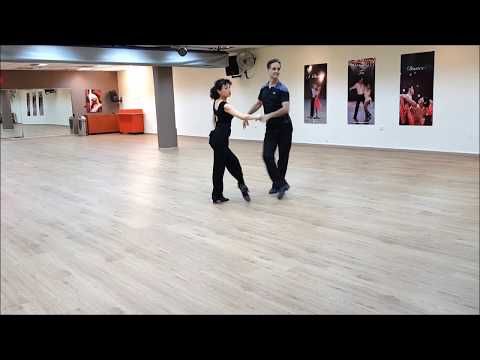
Let's complicate the main movement "resetting the hip" with the extension of the leg, and we get a new movement - "classic key" (thigh drop with leg extension).
Starting position - as in the previous exercise: standing in a semi-squat and half-turned to the viewer. The body looks forward, the hips and legs are turned to the side at an angle of 45 °. We put the leg closest to the viewer (working in this movement) in front of the one behind (supporting), on the toe, and expose its thigh and turn it forward (towards the viewer). The back is straight and slightly tilted back, the arms are spread apart (option - the arm of the same name as the supporting leg is raised up).
We perform one reset with the right hip, the emphasis is while moving down (at its lowest point). Raise the right thigh again, and then lower it, while throwing the right leg forward, the toe of the foot stretches forward and down.
Raising the hip up each time, we continue to alternate the impact with the hip down (hip drop) with the hip drop with leg extension.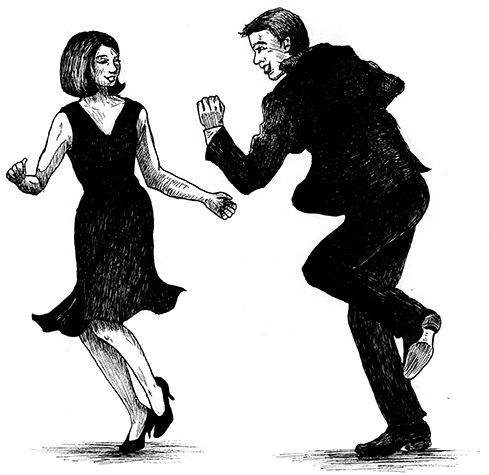 We perform this movement several times, and then change the leg - we work with the left thigh.
We perform this movement several times, and then change the leg - we work with the left thigh.
"Key" can be performed on weight. In this case, when the leg lunges forward, its toe does not touch the floor, that is, we keep the leg in the air.
We continue to develop the spine and back muscles.
Changing the starting position: standing on a full foot, legs slightly apart (about the width of the foot) and located on the same line parallel to each other. The body is slightly tilted back, the back is straight, the stomach is relaxed, the knees are “soft”, the arms are at the sides, the weight of the body is on the left leg (as in a pull).
Execute semicircle hips.
We take the hips forward - the body deviates back, but the head does not throw back in any case (!) - and take it to the right, outlining (with maximum amplitude) an imaginary semicircle.
Now let's make a full circle.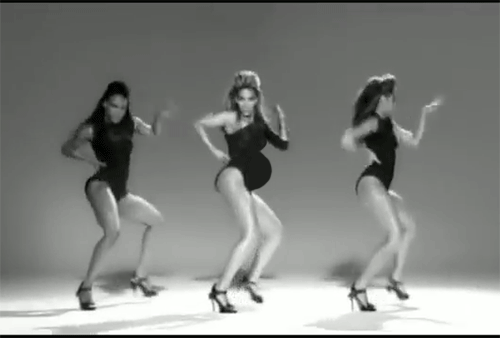
Circle of the hips is a movement familiar to each of us since school or even kindergarten times. He was certainly included and is still included in a variety of gymnastic complexes called "hip rotation".
At first, to help you check whether the shoulders and upper chest are moving horizontally or vertically during the exercise, you can put your hands on your shoulders.
Combine the hips forward semicircle with the back semicircle and perform a full circle with the hips to the left on straight legs. The hips move along all four points: we take them forward (the body leans back, but the head does not throw back), we take them to the left, wrapping the hips, we take them back, transferring the body weight to the right leg, we take them to the right, etc.
While the hips make a circle, the head, shoulders and arms remain at the same level. We repeat the rotation of the hips to the left again, and then we perform a circle in the other direction: right - forward - left - back, trying not to move the upper body and keep the line of the shoulders parallel to the floor line.
This text is an introductory fragment.
Driving mode control information
Driving information When driving a car, the driver receives a huge amount of information, but attention must be focused on the main thing that determines the current traffic situation or interferes with traffic and threatens to run over or
Circle movement adjustment
Adjusting the movement of the circles The speed of movement of the circles depends primarily on the specific gravity of the material from which they are made (foam and cork circles float faster in the wind than wooden ones). The thicker the circle, the faster the movement. At the circle with a thick and
Breast movements
Breast movements Check your posture.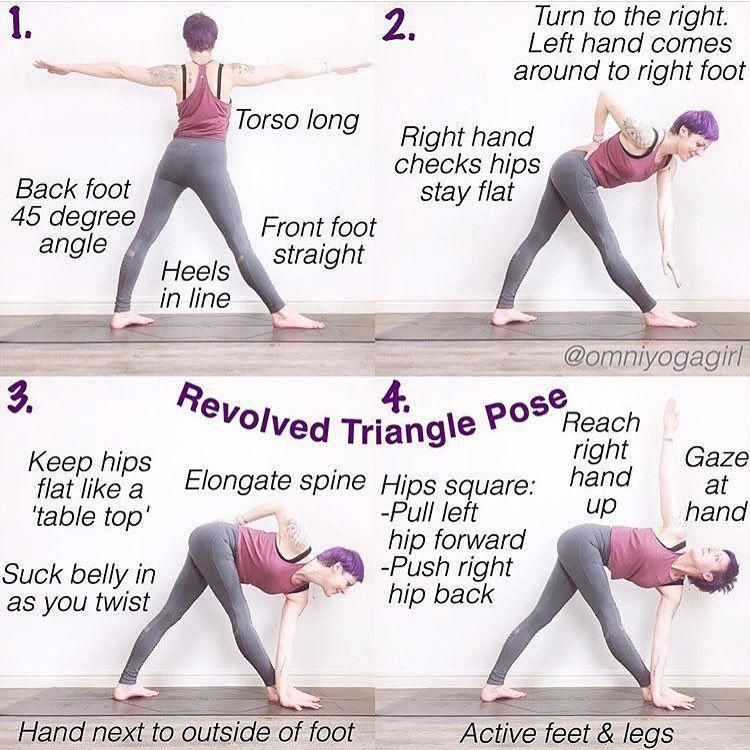 Stand up straight, pull in your stomach, push your chest slightly forward, both feet are stable and firmly on the floor, arms are spread apart. We start chest movements. Without moving the lower part of the body, we raise (push out) the chest with a short movement
Stand up straight, pull in your stomach, push your chest slightly forward, both feet are stable and firmly on the floor, arms are spread apart. We start chest movements. Without moving the lower part of the body, we raise (push out) the chest with a short movement
Tilt motion
Tilt movements Let's move on to the movements in the pull. Starting position: stand straight on the full foot (legs are on the same line), the body is slightly tilted back, the back is straight, the legs are shoulder-width apart, the knees are “soft”, the arms are at the sides. Pull the hips to the right and shift the weight
Walking with cane on shoulder
Walking with a cane on the shoulder Holding the cane on the right shoulder, perform penetration "three" with a turn in place around its axis in the direction to the left.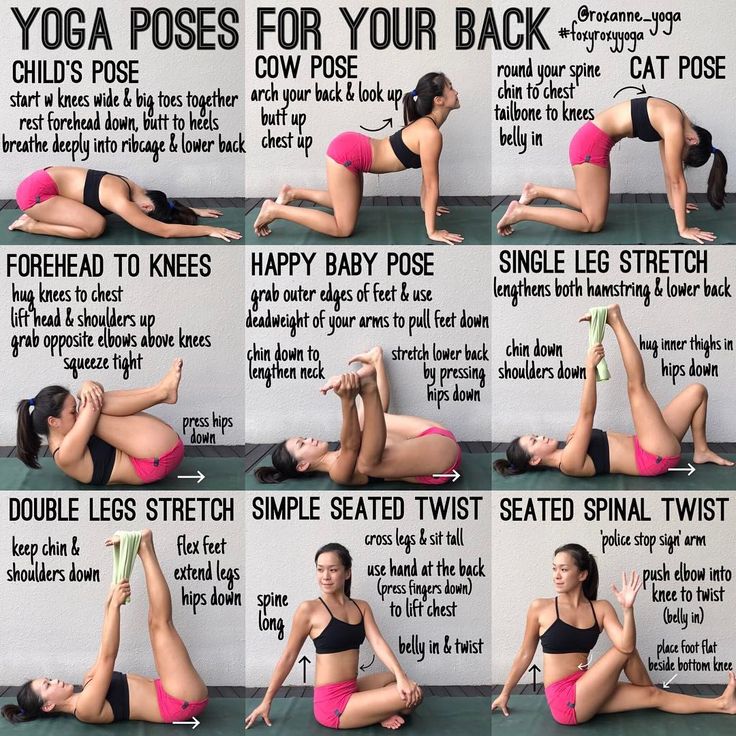 Raise the left thigh and leg, bent at the knee, up. Then we lower the thigh down (while the left leg is still
Raise the left thigh and leg, bent at the knee, up. Then we lower the thigh down (while the left leg is still
Movement with shawl
Movements with a shawl The dance with a shawl (scarf, veil, handkerchief) is one of the most traditional. A scarf can amazingly transform, decorate the movements of a dancer. Its possibilities are almost limitless, and therefore working with it is a special pleasure. Competently
Travel speed
Travel speed One of the key factors affecting the efficiency of the car is the speed of movement. Everyone knows that the most economical driving mode is driving on a country road in calm weather at a speed of about 80–90 km/h at the highest (in
How the motion sensor works
How is the motion sensor In the middle of the sensor, there are receivers of IR light - photocells. The Fresnel lens consists of many small lenses, each of which focuses IR light on the plane of the photocell, and one of them focuses directly on the photocell itself (signal
The Fresnel lens consists of many small lenses, each of which focuses IR light on the plane of the photocell, and one of them focuses directly on the photocell itself (signal
Motion sensor infrared Camelion
Infrared motion sensor Camelion The motion sensors of the Chinese company Camelion are widely and varied in stores. Economy-class infrared sensors, which were created as energy-saving switches, primarily lighting, although their functions are almost
3.5.6. Motion detectors LX-19B and LX-2000
3.5.6. Motion detectors LX-19B and LX-2000 Infrared motion sensors are commercially available, adapted in shape to wall light switches for flush wiring (Fig. 3.62) LX-19B and LX-2000 (Fig. 3.63) manufactured by the Chinese company Litarc Lighting & Electronic Ltd. Rice. 3.62. Household light switch
3.

